ING Direct 2011 Annual Report Download - page 14
Download and view the complete annual report
Please find page 14 of the 2011 ING Direct annual report below. You can navigate through the pages in the report by either clicking on the pages listed below, or by using the keyword search tool below to find specific information within the annual report.-
 1
1 -
 2
2 -
 3
3 -
 4
4 -
 5
5 -
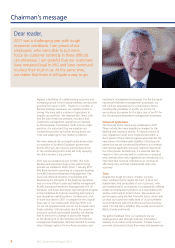 6
6 -
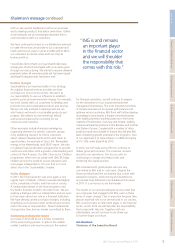 7
7 -
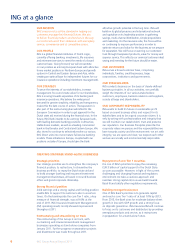 8
8 -
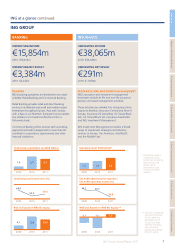 9
9 -
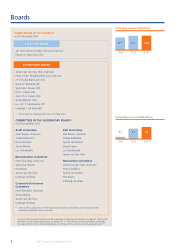 10
10 -
 11
11 -
 12
12 -
 13
13 -
 14
14 -
 15
15 -
 16
16 -
 17
17 -
 18
18 -
 19
19 -
 20
20 -
 21
21 -
 22
22 -
 23
23 -
 24
24 -
 25
25 -
 26
26 -
 27
27 -
 28
28 -
 29
29 -
 30
30 -
 31
31 -
 32
32 -
 33
33 -
 34
34 -
 35
35 -
 36
36 -
 37
37 -
 38
38 -
 39
39 -
 40
40 -
 41
41 -
 42
42 -
 43
43 -
 44
44 -
 45
45 -
 46
46 -
 47
47 -
 48
48 -
 49
49 -
 50
50 -
 51
51 -
 52
52 -
 53
53 -
 54
54 -
 55
55 -
 56
56 -
 57
57 -
 58
58 -
 59
59 -
 60
60 -
 61
61 -
 62
62 -
 63
63 -
 64
64 -
 65
65 -
 66
66 -
 67
67 -
 68
68 -
 69
69 -
 70
70 -
 71
71 -
 72
72 -
 73
73 -
 74
74 -
 75
75 -
 76
76 -
 77
77 -
 78
78 -
 79
79 -
 80
80 -
 81
81 -
 82
82 -
 83
83 -
 84
84 -
 85
85 -
 86
86 -
 87
87 -
 88
88 -
 89
89 -
 90
90 -
 91
91 -
 92
92 -
 93
93 -
 94
94 -
 95
95 -
 96
96 -
 97
97 -
 98
98 -
 99
99 -
 100
100 -
 101
101 -
 102
102 -
 103
103 -
 104
104 -
 105
105 -
 106
106 -
 107
107 -
 108
108 -
 109
109 -
 110
110 -
 111
111 -
 112
112 -
 113
113 -
 114
114 -
 115
115 -
 116
116 -
 117
117 -
 118
118 -
 119
119 -
 120
120 -
 121
121 -
 122
122 -
 123
123 -
 124
124 -
 125
125 -
 126
126 -
 127
127 -
 128
128 -
 129
129 -
 130
130 -
 131
131 -
 132
132 -
 133
133 -
 134
134 -
 135
135 -
 136
136 -
 137
137 -
 138
138 -
 139
139 -
 140
140 -
 141
141 -
 142
142 -
 143
143 -
 144
144 -
 145
145 -
 146
146 -
 147
147 -
 148
148 -
 149
149 -
 150
150 -
 151
151 -
 152
152 -
 153
153 -
 154
154 -
 155
155 -
 156
156 -
 157
157 -
 158
158 -
 159
159 -
 160
160 -
 161
161 -
 162
162 -
 163
163 -
 164
164 -
 165
165 -
 166
166 -
 167
167 -
 168
168 -
 169
169 -
 170
170 -
 171
171 -
 172
172 -
 173
173 -
 174
174 -
 175
175 -
 176
176 -
 177
177 -
 178
178 -
 179
179 -
 180
180 -
 181
181 -
 182
182 -
 183
183 -
 184
184 -
 185
185 -
 186
186 -
 187
187 -
 188
188 -
 189
189 -
 190
190 -
 191
191 -
 192
192 -
 193
193 -
 194
194 -
 195
195 -
 196
196 -
 197
197 -
 198
198 -
 199
199 -
 200
200 -
 201
201 -
 202
202 -
 203
203 -
 204
204 -
 205
205 -
 206
206 -
 207
207 -
 208
208 -
 209
209 -
 210
210 -
 211
211 -
 212
212 -
 213
213 -
 214
214 -
 215
215 -
 216
216 -
 217
217 -
 218
218 -
 219
219 -
 220
220 -
 221
221 -
 222
222 -
 223
223 -
 224
224 -
 225
225 -
 226
226 -
 227
227 -
 228
228 -
 229
229 -
 230
230 -
 231
231 -
 232
232 -
 233
233 -
 234
234 -
 235
235 -
 236
236 -
 237
237 -
 238
238 -
 239
239 -
 240
240 -
 241
241 -
 242
242 -
 243
243 -
 244
244 -
 245
245 -
 246
246 -
 247
247 -
 248
248 -
 249
249 -
 250
250 -
 251
251 -
 252
252 -
 253
253 -
 254
254 -
 255
255 -
 256
256 -
 257
257 -
 258
258 -
 259
259 -
 260
260 -
 261
261 -
 262
262 -
 263
263 -
 264
264 -
 265
265 -
 266
266 -
 267
267 -
 268
268 -
 269
269 -
 270
270 -
 271
271 -
 272
272 -
 273
273 -
 274
274 -
 275
275 -
 276
276 -
 277
277 -
 278
278 -
 279
279 -
 280
280 -
 281
281 -
 282
282 -
 283
283 -
 284
284 -
 285
285 -
 286
286 -
 287
287 -
 288
288 -
 289
289 -
 290
290 -
 291
291 -
 292
292 -
 293
293 -
 294
294 -
 295
295 -
 296
296 -
 297
297 -
 298
298 -
 299
299 -
 300
300 -
 301
301 -
 302
302 -
 303
303 -
 304
304 -
 305
305 -
 306
306 -
 307
307 -
 308
308 -
 309
309 -
 310
310 -
 311
311 -
 312
312 -
 313
313 -
 314
314 -
 315
315 -
 316
316 -
 317
317 -
 318
318 -
 319
319 -
 320
320 -
 321
321 -
 322
322 -
 323
323 -
 324
324 -
 325
325 -
 326
326 -
 327
327 -
 328
328 -
 329
329 -
 330
330 -
 331
331 -
 332
332
 |
 |

Financial markets and the economy hitthe
brakes in 2011
> Sovereign debt crisis created a highly
challenging economic and financial
environment
> Important changes in regulation
andsupervision
Major changes in the external environment had an impact on ING
in 2011, the most significant being the deepening of the sovereign
debt crisis in the eurozone which created an extremely challenging
economic and financial market environment in the second half of
2011. Consequently, international capital and money markets were
not functioning as normal. This had repercussions, especially in
Europe where funding for governments and financial institutions
dried up in certain markets.
The financial sector was also subjected to further regulatory reform
during the year. Although we support in principle the regulatory
reforms, we have concerns with both the massive volume of new
regulation and the lack of coordination throughout the European
Union (EU) and at the international level. ING favours a harmonised
approach to new financial regulation in the EU, both with regard
todrafting and transposition into national laws. This would minimise
interference with the vital role banks have in supporting the real
economy. One of our primary concerns, therefore, is the increasing
number of national initiatives being taken by different member states
on matters that should, for reasons of maintaining a level playing
field and enhancing the Single Market, be dealt with at the European
level. Examples are the introduction of national bank levies, different
interpretations and timing of Basel III rules and liquidity standards.
Banks based in countries moving ahead of international regulation
could be placed at a competitive disadvantage.
We made good progress in 2011 with the European Commission’s
restructuring requirements for ING Group, and with the strengthening
and streamlining of our banking and insurance businesses. The result
is that ING is now in a relatively good position to navigate successfully
through the challenges that will undoubtedly come from further
changes in the financial and regulatory environment.
CHALLENGING ECONOMIC AND FINANCIAL ENVIRONMENT
The sovereign debt crisis deepened in 2011 and had a negative
effect on the economy and on financial markets.
EUROPEAN SOVEREIGN DEBT CRISIS AFFECTED CREDIT AND
EQUITY MARKETS IN 2011
For the eurozone countries in particular, 2011 was a year of two very
different halves. In the first half there were still signs of continuing
economic recovery; but in the second half the eurozone’s sovereign
debt crisis which had slowly emerged in 2010, deepened and had a
negative knock-on effect on the economy. 2011 was for a large part
marked by the inability of public authorities and institutions to solve
the crisis.
In the eurozone, credit spreads only slightly increased in the first
half of 2011, but moved up in the third quarter of 2011 towards
levels not seen since the direct aftermath of the fall of Lehman
Brothers in September 2008. In the US, credit spreads followed
asimilar pattern, but rose less sharply than in the eurozone.
Equity indices in the US and the eurozone decreased in the second and
third quarter of 2011 and increased somewhat in the last quarter, but
not enough to make up for the earlier downturn. In the eurozone, the
FTSEurofirst 300 Index declined to levels last seen in the second quarter
of 2009. The share prices of financial companies were particularly
adversely affected. In these difficult market circumstances the
performance of the ING share price was better than the FTSE 300 Banks
Index but somewhat worse than the FTSE 300 Life Insurance Index over
2011, as shown in the ‘INGshare’ chapter in this Annual Report.
12 ING Group Annual Report 2011
Financial and regulatory environment
